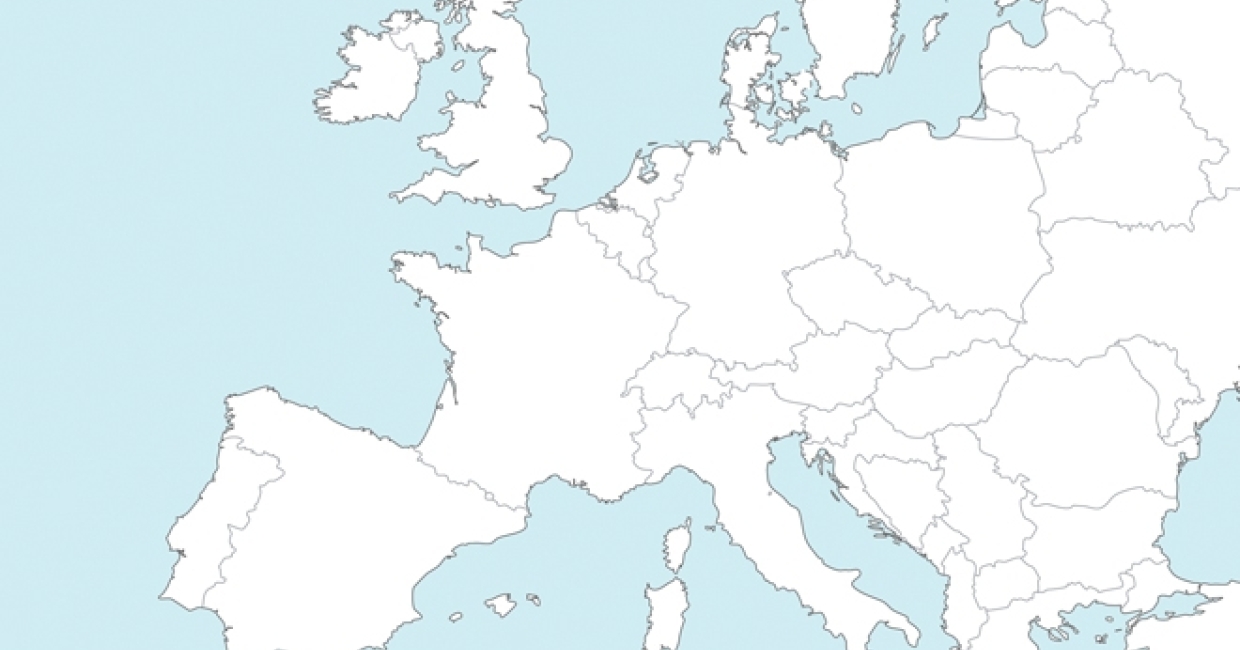Western Europe is a key player in the global furniture sector, accounting for over 20% of total furniture production and around 20% of consumption. However, the last decade has seen significant changes take place. In this article, CSIL’s Alessandra Tracogna explores the industry trends …
Western Europe ranks second after the Asia-Pacific countries, together supplying around 50% of whole furniture production and absorbing over 40% of world furniture consumption. However, the role of Western Europe has changed a lot over the last decade, particularly during the world economic crisis. Western Europe moved from the first to the second position amongst the world’s major producing areas – it accounted for one third of both world furniture production and world furniture consumption in 2002.
Gap among consuming countries
Switzerland, Norway and Belgium recorded the highest furniture consumption growth rate in 2011, followed by Finland, Austria, Sweden and Germany. On the other side, the southern furniture markets further decreased in 2011, with Italy, Spain, Portugal and Greece showing poor performances, with negative rates exceeding, in some cases, -7%.
The Centre for Industrial Studies (CSIL) forecasts for 2012 and 2013 are quite cautious, as the Western European furniture market was expected to further shrink by -1% in 2012 and to remain stable in 2013. Scandinavian countries will continue to perform better than the others. The UK and Central European countries will remain stable, whereas southern countries will further slow down, thus increasing the gap among the countries of the area.
Furniture supply – ups and downs
The Western European furniture industry comprises around 150,000 companies, generating a turnover of about €67b, with Italy and Germany, followed by France, the UK and Spain being the leading furniture producers.
After a sharp contraction in 2009 (-15%) and a stagnant 2010 (+0.03%), Western European furniture production experienced a slight increase of 1.3% in 2011, with non-homogeneous performances among countries. The best performers in terms of production growth rates, in 2011 were Germany, Sweden and Switzerland, which better reacted to the crisis.
While maintaining a leading position providing around one fourth of total Western European furniture production, Italy recorded a negative performance in the last decade. A further contraction in 2011 (-3%) of Italian furniture production resulted in the lowest value of the decade (¤16.8b). Germany follows on the heels of Italy for production, continuing the recovery already started in 2010, reaching €16.7b – roughly 96% of its 2008 value (the peak for the decade).
Export growing faster than production
In 2011, Western European furniture exports showed a growth of 5% compared to the previous year, but absolute values are still below the pre-crisis levels. The export/production ratio for the area is roughly 42% – far over the world average (around 30%).
Almost €29b of Western European furniture production is currently sold outside the country of origin, and it is mainly oriented to the neighbouring markets. The share is decreasing year after year as, due to new market scenarios opened by the world economic crisis, future developments of Western European furniture production will be strictly linked to the export activity overseas.
“Due to new market scenarios opened by the world economic crisis, future developments of Western European furniture production will be strictly linked to the export activity overseas”
Germany, Italy, Denmark and the UK are the only net exporters in Western Europe. Germany and Italy are by far the largest exporters of the area and they are respectively the second and the third exporter at a world level, after China. In 2011 Germany overtook Italy, thus becoming the leading furniture exporter in Europe.
Previous net exporters like Austria, Belgium-Luxembourg, France, Greece, Ireland, the Netherlands, Norway and Switzerland changed direction, starting to import more furniture than was exported. One fourth of the market is satisfied by Asian products.
During the last decade the Western Europe furniture market has been continuously opening up to foreign products (+33% in 10 years). In total, the furniture imports of Western Europe reached €36.7b. The average import/production ratio for the area is 50%, meaning that around one half of the market (in value) is satisfied by imported items. Italy still records the lowest import/consumption ratio of the area and one of the lowest at a world level, even if import penetration is increasing.
Around one fourth of the furniture items imported come from Asia-Pacific (around 10% a decade ago). The highest penetration of Asian furniture was experienced by the Netherlands, followed by the UK and Denmark.
This is a summary of The furniture industry in Europe, Part 1: Outlook for 16 countries, a report by the Centre for Industrial Studies (CSIL), an independent research institute specialising in applied economics. Alessandra Tracogna is a CSIL partner and senior expert within CSIL Industry and Country Studies. Article courtesy of CSIL’s World Furniture Review magazine, December 2012.












